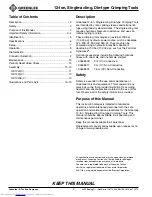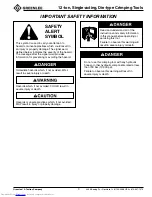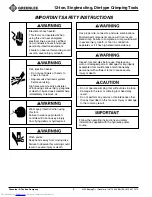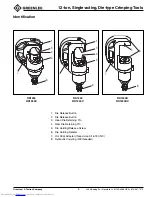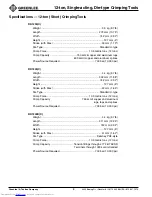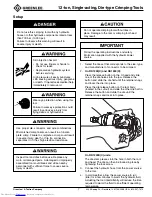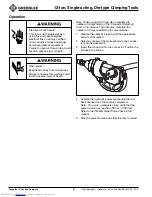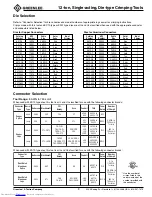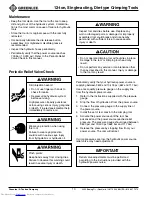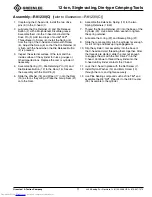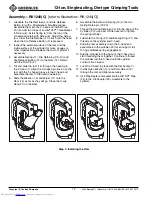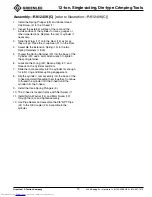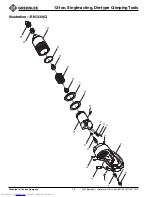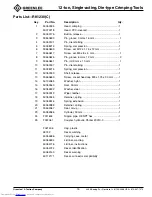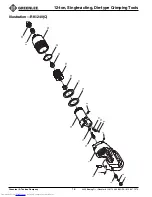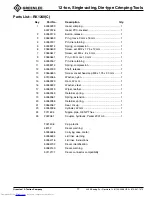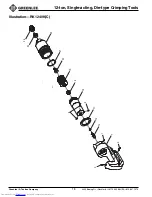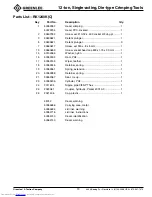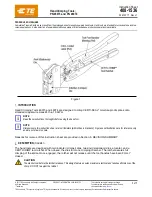
Greenlee / A Textron Company
10
4455 Boeing Dr. • Rockford, IL 61109-2988 USA • 815-397-7070
12-ton, Single-acting, Die-type Crimping Tools
IMPORTANT
Relief valve adjustments must be performed
according to the instructions provided with the
hydraulic power source.
Periodically verify that your hydraulic power source is
supplying between 9600 and 10,400 psi (662 and 717 bar).
Use a test-quality pressure gauge on the supply line
from the hydraulic power source.
1.
Refer to the instructions supplied with the pressure
gauge.
2.
Stop the flow of hydraulic oil from the power source.
3.
Connect the pressure gauge to the supply line of
the power source.
4.
Install the set of test dies into the crimping tool.
5.
Activate the power source until the ram has
advanced and the power source reaches relief
pressure. The pressure gauge should read between
9600 psi and 10,400 psi (662 bar and 717 bar) .
6.
Release the pressure by stopping flow from your
power source. The ram will retract.
If crimp pressures are low, the hydraulic power source
relief valve may need adjustment.
Periodic Relief Valve Check
Wear eye protection when using
this tool.
Failure to wear eye protection
could result in serious eye injury
from flying debris or hydraulic oil.
Skin injection hazard:
• Do not use fingers or hands to
check for leaks.
• Depressurize hydraulic system
before servicing.
High pressure oil easily punctures
skin causing serious injury, gangrene
or death. If injured seek medical help
immediately to remove oil.
Inspect tool and dies before use. Replace any
worn or damaged parts. A damaged or improperly
assembled tool could break and strike nearby
personnel with sufficient force to cause severe
injury or death.
• Do not operate crimping tool without dies in place.
Damage to the ram or crimping tool head may
result.
• Do not perform any service or maintenance other
than as described in this manual. Injury or damage
to the tool may result.
Maintenance
• Keep the tool clean. Use the tool with care to keep
dirt and grit out of the hydraulic system. Contamina-
tion is the most common cause of failure for hydraulic
tools.
• Store the tool in its original case with the ram fully
retracted.
• Occasionally lubricate the die release button
assemblies. A molybdenum disulfide grease is
recommended.
• Inspect the hydraulic hoses periodically.
• Periodically verify that the power source reaches
700 bar (10,000 psi). Refer to the Periodic Relief
Valve Check in this manual.
Pinch points:
Keep hands away from closing dies.
Failure to observe this warning could
result in severe injury or death.
electronic components distributor


